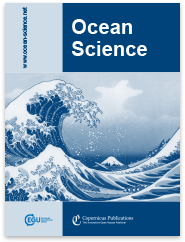Compensation between meridional flow components of the Atlantic MOC
 Research supported by CPO’s Climate Observation Division outlines new facts on the dynamics controlling Atlantic meridional overturning circulation (MOC) variability and highlights some of the unexpected interplay between the density variations in the deep portions of the western region and the direct wind forcing across the basin.
Research supported by CPO’s Climate Observation Division outlines new facts on the dynamics controlling Atlantic meridional overturning circulation (MOC) variability and highlights some of the unexpected interplay between the density variations in the deep portions of the western region and the direct wind forcing across the basin.
The research, ” Compensation between meridional flow components of the Atlantic MOC at 26° N,” was published on April 1, 2016, in Ocean Science, an interactive open-access journal of the European Geosciences Union.
This paper presents the 10-year record of meridional overturning circulation (MOC) observations that have been collected by the joint U.S. (NOAA & NSF) and U.K. (NERC) trans-basin array at 26°N in the Atlantic. These observations represent the longest continuous truly trans-basin observations of the MOC ever collected, and they have become the ‘gold standard’ against which other MOC observations as well as ocean and climate models are compared.
Abstract:
From ten years of observations of the Atlantic meridional overturning circulation (MOC) at 26° N (2004–2014), we revisit the question of flow compensation between components of the circulation. Contrasting with early results from the observations, transport variations of the Florida Current (FC) and upper mid-ocean (UMO) transports (top 1000 m east of the Bahamas) are now found to compensate on sub-annual timescales. The observed compensation between the FC and UMO transports is associated with horizontal circulation and means that this part of the correlated variability does not project onto the MOC. A deep baroclinic response to wind-forcing (Ekman transport) is also found in the lower North Atlantic Deep Water (LNADW; 3000–5000 m) transport. In contrast, co-variability between Ekman and the LNADW transports does contribute to overturning. On longer timescales, the southward UMO transport has continued to strengthen, resulting in a continued decline of the MOC. Most of this interannual variability of the MOC can be traced to changes in isopycnal displacements on the western boundary, within the top 1000 m and below 2000 m. Substantial trends are observed in isopycnal displacements in the deep ocean, underscoring the importance of deep boundary measurements to capture the variability of the Atlantic MOC.
Access the full report: http://www.ocean-sci.net/12/481/2016/